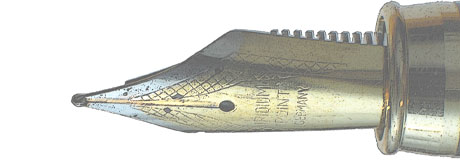When I was four or five years old, growing up in Israel, I’d sit for hours pretending to read. I remember a photo, a white-bordered jagged-edged black and white, of a freckled round-faced boy, in a horizontal-striped T-shirt and shorts, sandaled feet, sitting in a wicker and metal chair peering casually into a large Hebrew edition of The Little Prince, with that golden-haired boy in his blue cape on the cover. I’m sure my little boy imagination marveled at the celestial travels and adventures of the boy prince. The mysterious rose, the fox who wanted to be tamed, the prince’s ascendance to the heavens after being bitten by the conniving snake, all this was too much for a little boy to comprehend. Much later, I’d rediscovered The Little Prince as an adult and I learned about the aviation adventures of Antoine de Ste. Exupéry, the explorer of place and life, who wrote he “always loved the desert. One sits down on a desert sand dune, sees nothing, hears nothing. Yet through the silence something throbs, and gleams.”
It’s still the first week of January and I’ve got great plans. I’ve been thinking about hearing. Hearing is a peculiar ability – it requires no effort whatsoever. The world is full of sounds of great significance and beauty, but who cranes their awareness to notice? I surround myself with sound and pretend to hear what people tell me and the news on TV and Glenn Gould’s Goldberg Variations emanating from the stereo speakers, but do I really hear or am I escaping the noise that constantly floods my consciousness? It is surely tragic for anyone to be within hearing of songbirds at low tide on a breezy afternoon when the sweet songs of finches and crows mingle with the whoosh of air in the leaves and the splashing of waves on mossy boulders, oblivious to the sacred succor of earthly sounds. But if you cultivate a healthy but simple awareness, so that the chirp of a sparrow or the lull of the surf will lighten your load and make your day, then, since the world throbs and gleams in melodious sounds, you have with your simplicity acquired an enduring equanimity. It is that simple. What you hear is the sound of life. Water, wind, life.
When I first discovered music, with my new-found post-pubescent consciousness, I’d listen (on vinyl) to Jimi Hendrix, on the floor supine, eyes shut, thoughts and worries drifting away into an ocean of nothingness. Guitar notes flow in waves from the left to right and then back again. Some say “1983… (A Merman I Should Turn to Be)” is a surreal apocalypse evoking Jimi’s despair of mankind, where he finally returns to the sea, the source of all life. For me, as a teenager, Jimi’s psychedelic sounds of waves and sand kept my mind off what was happening, but not by shutting life out altogether. Sometimes, I’d fall asleep to the undulating sounds of Electric Ladyland only to wake up to the scratchy sound of the needle on the non-grooved circle of vinyl closest to the centre-hole. Some of the lyrics have stayed with me to this day: So my love and me decide to take our last walk through the noise to the sea; Not to die but to be reborn, away from lands so battered and torn.
But music, they say, depends on silence to give brilliance to melodies and rhythms. Music scores come with notated rests for periods of silence, for contemplation and reflection – on the music and on life. The composer John Paynter once said that composers rely on silence for dramatic effect. In Bach’s St. Matthew Passion, the pause between “have lightnings and thunders …” and “open up the fiery bottomless pit O’ hell,” abandons us in solitary terror as we are flung brutally away from all we know and are left staring blankly into the infinite ineffable void.
In all spiritual traditions silence is a metaphor for inner stillness. But inner stillness is not about the absence of sound. Stillness connects us with the universe, ultimate reality, one’s own true self, or one’s divine nature. Silence transforms. Eckhart Tolle says that silence can be seen either as the absence of noise or as the space in which sound exists, just as inner stillness can be seen as the absence of thought, or the space in which thoughts are perceived.
Kristin Buehl, deaf from birth, receives a cochlear implant at the age of twenty-one. “My audiologist asked if I could hear her. After seeing me shake my head, she expressed surprise. Then it hit me. The undulating waves I was feeling in my head were actually sounds, not my imagination.” And after three decades of deafness, at the age of 47, Beverly Biderman turns on her new cochlear implant and takes a walk to a ravine beside the hospital. She says “it’s gorgeous on this beautiful summer day and voluptuous with sound. There are what seem to be thousands of birds, all very noisy, but the sounds together, are rather nice. I feel connected, a part of the scene. I see a group of little children from a day camp, strung together with rope. They are singing a song, and I can catch a rhythm to their singing, and it sounds high and sweet and fine.”
I think hearing is a gift too easily neglected. I hadn’t noticed the contrast between sound and silence and how much it connects me with my place among the living and all of nature in its undeniable beauty; beauty in the roar of a waterfall, the laughing call of a kookaburra, whispering winds and gushing waves, and the stillness of silence.
